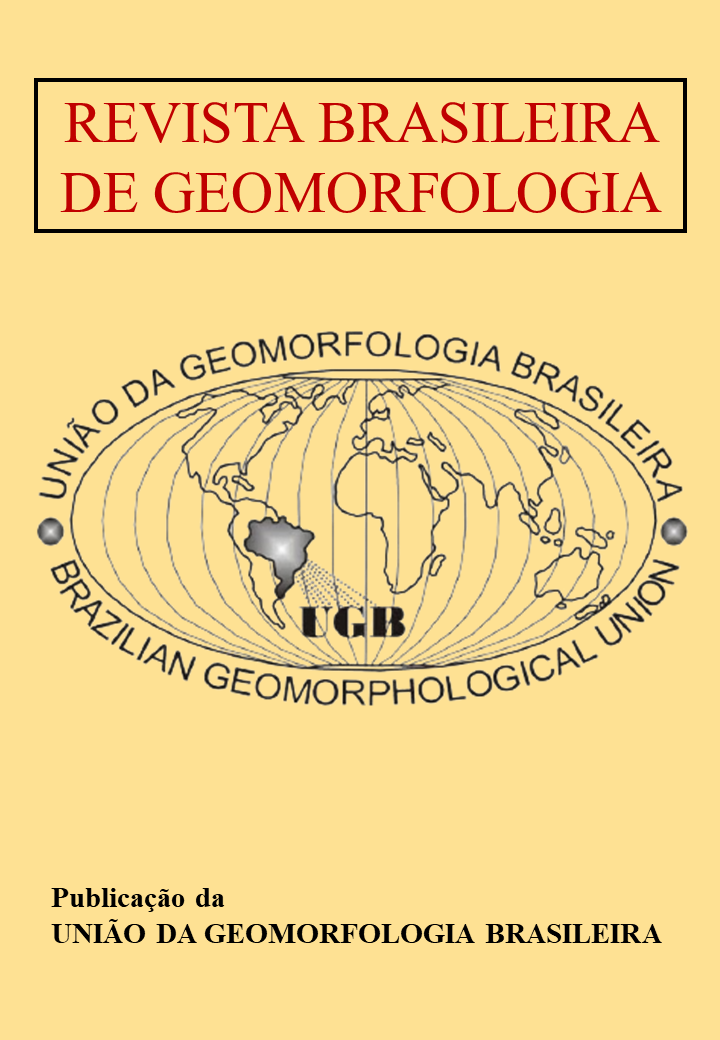Structural control in water erosive processes and sandization, Arroio Miracatu hydrographic basin - Rio Grande do Sul
DOI:
https://doi.org/10.20502/rbgeomorfologia.v24i00.2318Keywords:
sands, Quaternary surface formations, tectonic lineaments, ravines, gulliesAbstract
In the western region of Rio Grande do Sul state, Brazil, in the municipalities Manoel Viana and São Francisco de Assis, there is a significant occurrence of ravines and gullies, associated with surface formations that generate sand, a process known as sandization. These sands contrast with the notion of “desert or desertification nuclei”, which are related to improper land use during the agricultural expansion since the 1970s. In this context, the objective is to analyze aspects related to lithological, pedological, and morphostructural contexts in the genesis of hydro-erosive processes. The study area is the Miracatu Stream watershed, covering 61,584 hectares, and the research is divided into three stages: a) the analysis of soil degradation by linear water erosion processes; b) anomalies and morphometric parameters; c) erosive processes, relating them to lithologies, soils and lineaments. As a result, it is identified an erosive dynamic associated with morphostructural control, being identified lithologies in discordant altimetric positions. The exposure of the Guará and Botucatu Formations, demonstrates that this lithological exposure is related to the horst-type morphology. In the areas of intersection of medium-sized lineaments there is a greater erosive density and, consequently, the presence of sands, evidencing the relationship between: lineaments - water erosion processes - sands.
Downloads
Downloads
Published
How to Cite
Issue
Section
License

This work is licensed under a Creative Commons Attribution-NonCommercial 4.0 International License.
Author (s) retain copyright and grant the journal right of first publication with the work simultaneously licensed under the Creative Commons Attribution License that allows sharing the work with recognition of its initial publication in this journal.








